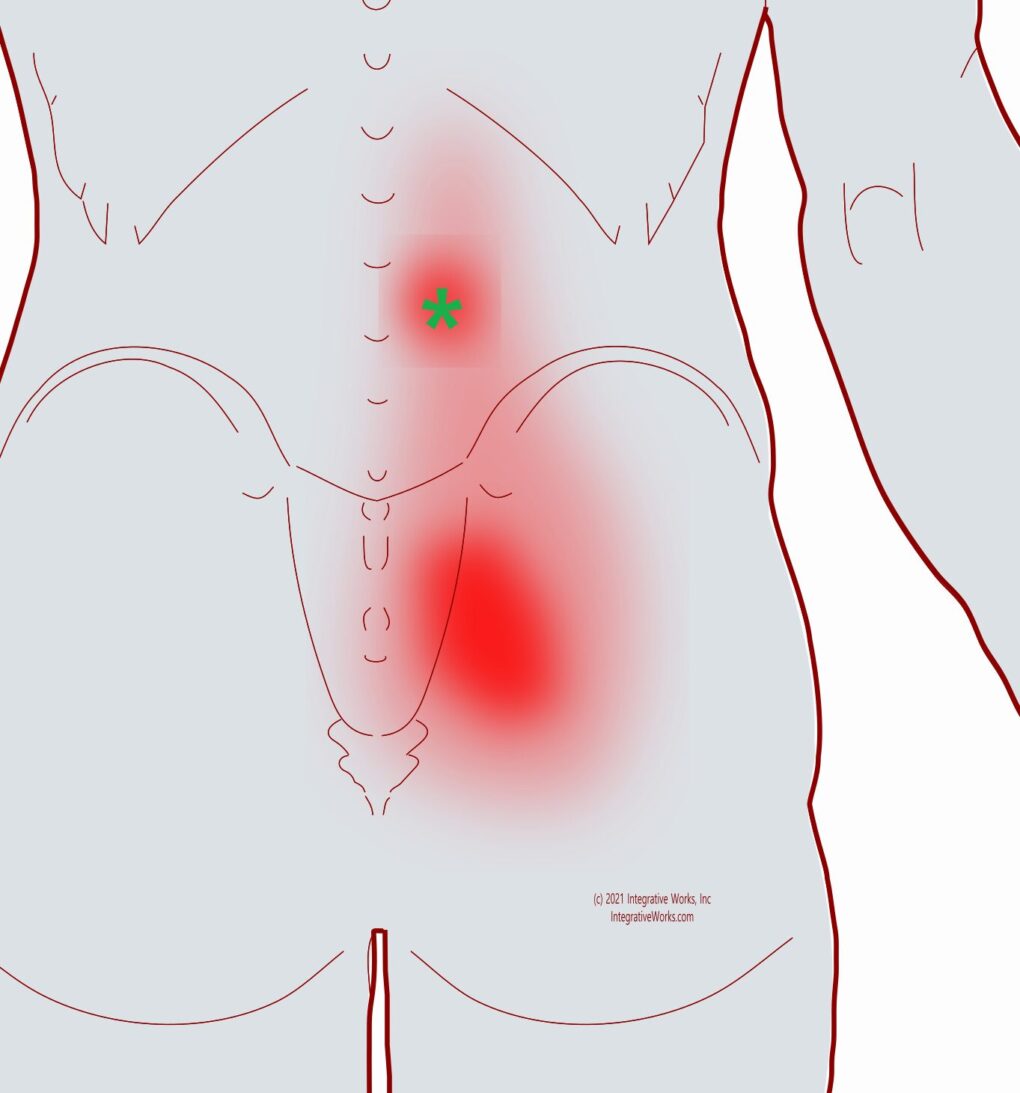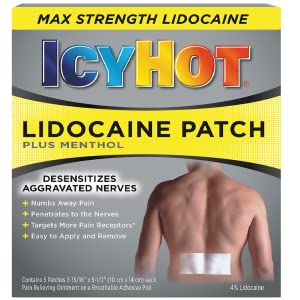When you stop coughing, continue to practice social distancing.
Act responsibly in protecting the health of yourself and others.
Practically speaking,
you can stimulate the skin in a way
that reduces the frequency and pain of coughing.
This is based on a neurological principle discovered by English surgeon John Hilton. Loosely stated, hot, cold, and pain travel in the same nerve, and stimulating the skin with cold neurologically relaxes the musculoskeletal structures underneath that skin. That’s handy if you know how to use it. In most cases, a bracing dose of cold is more effective and creates fewer problems than heat.
Getting rid of the dry hack:
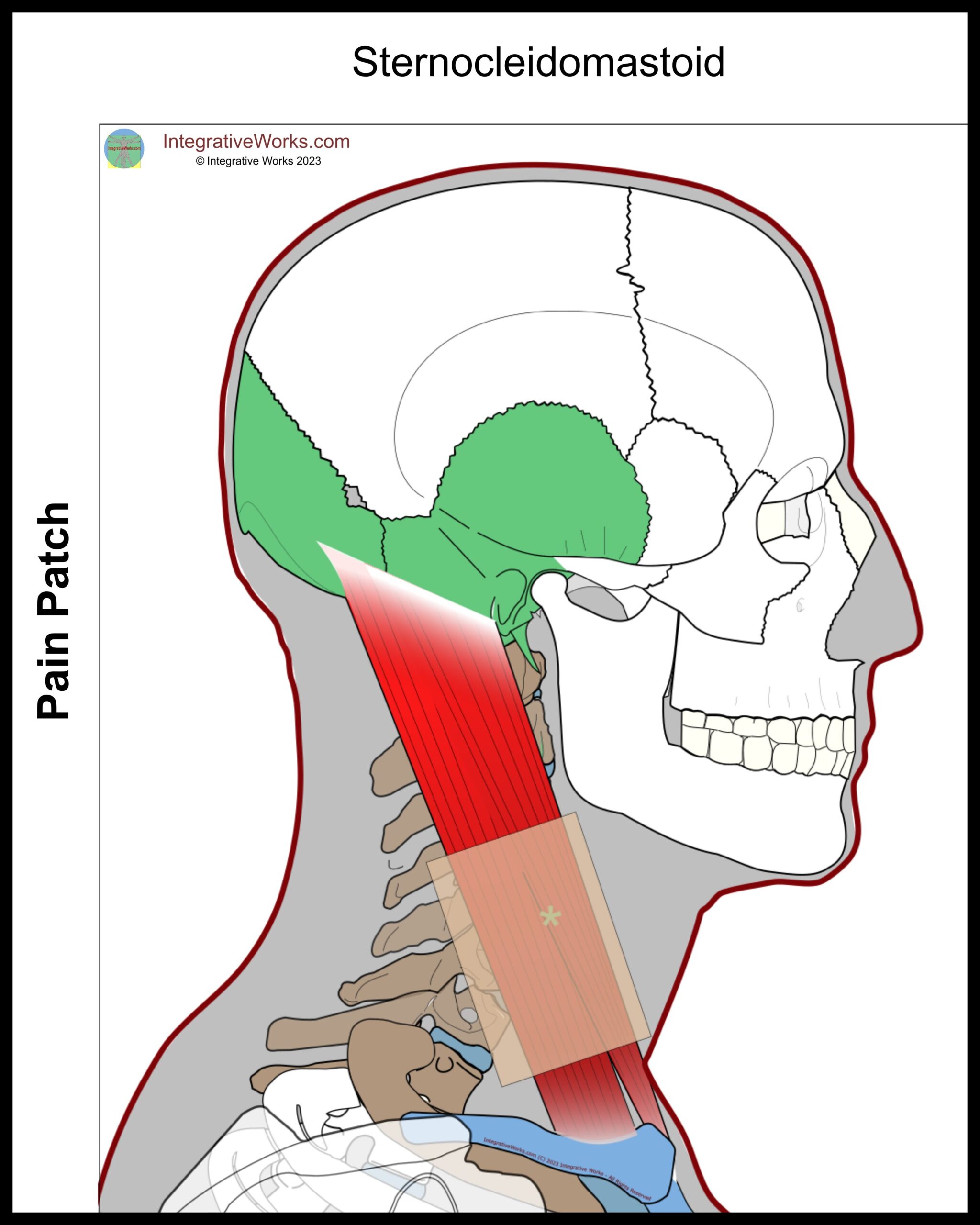
The Dry-Hack Trigger Point
Solid research reveals that a dry hack is often associated with the trigger points in the sternocleidomastoid muscle. I’ve often gotten rid of that cough by working this muscle. This muscle tightens if you’re reading, watching TV, or doing other things that pull your head forward with a slight twist to one side.
If you look in the mirror and one side seems to lay closer to your neck than the other side, it is probably associated with the cough.
If you have one, the easy solution is to put one of those little Salonpas patches on the side of the neck. Put it along the middle of the muscle where I have the green X. They’re available at every drug and grocery store. They’re even cheaper on Amazon.
This muscle produces more symptoms like anxiety, blurred vision, headache, and ear pain. Read more about strategies for relief in this post.
Stretch to Relieve the Dry Hack
This post shows you how to use Ice-and-Stretch to release this muscle at home with stuff you probably already have. I’ve done this countless times when a client gets a cough while lying on the table. It’s a great technique.
This is probably one of the most valuable stretches
you will ever do.
This muscle is complex. It impacts the vagus nerve, which runs in a sheath along the inside of the muscle. It impacts many things, from sinus irritation and headaches to coughing and hangovers. I have several posts about problems related to this muscle. (sternocleidomastoid)
Sore sides or nagging shoulder blade when coughing

There are several ways to release this, but I strongly suggest using a Salonpas patch. Put it right there where the green “X” marks the spot. It works very consistently.
If you don’t have the patch, doing the doorway stretches in this post is cheaper and quicker. Here’s the thing: If you don’t use the Ice-and-Stretch method, you might aggravate it. Ice-and-stretch can be intense when you ice this area, but that means it’s much more likely to produce great results.
Burning in mid-back from coughing:
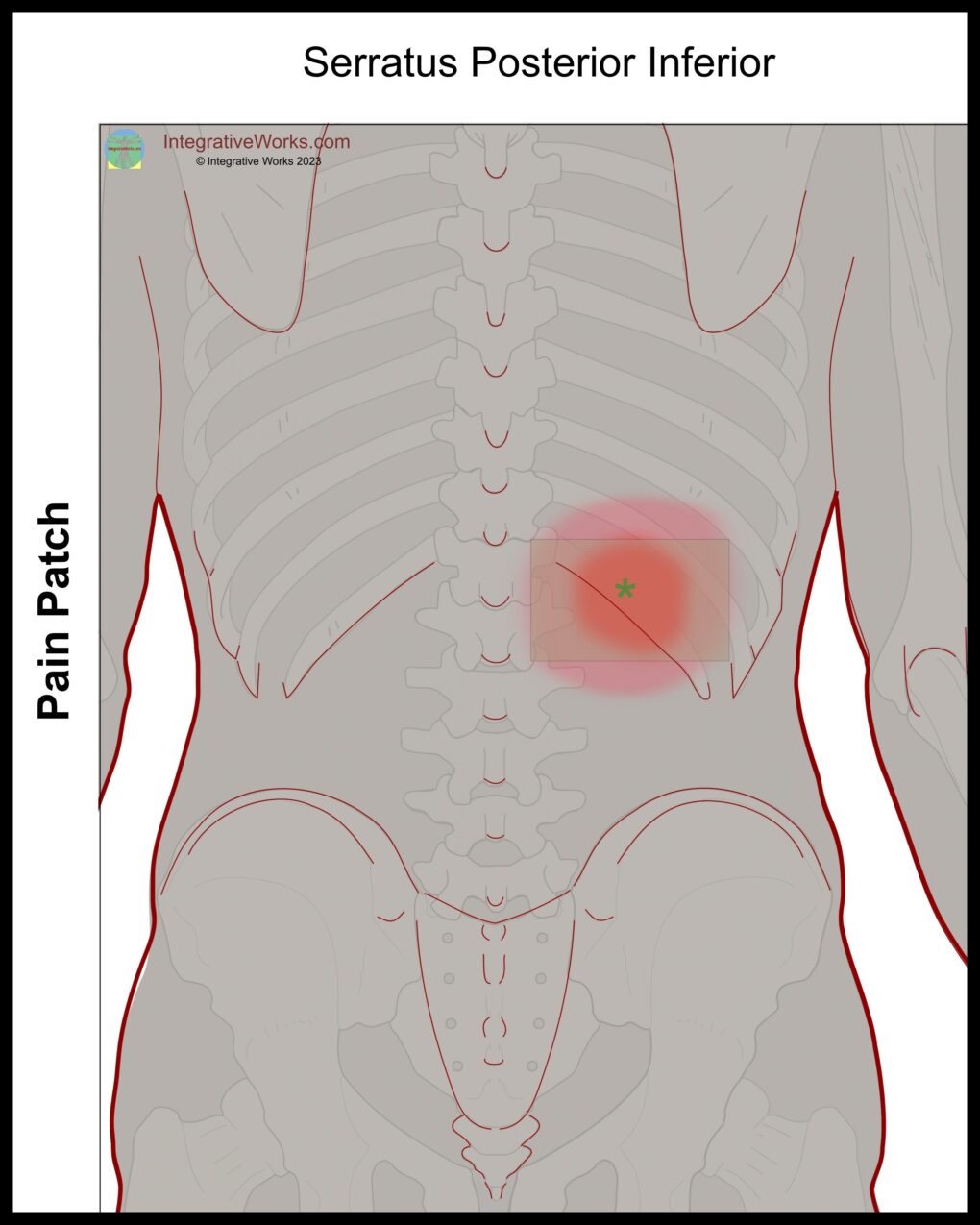
A small muscle called the serratus posterior inferior is very involved in coughing. Moreso, it gets aggravated when coughing is relentless. The best solution is a Salonpas patch because this muscle is a challenging area to stretch. Put it right on the red spot in the picture.
You can use contrast therapy as well. Here is a post with guidelines.
Sharp Pain in Low-back When Coughing:
This is a tougher one. It involves two muscles in the low back and is usually part of a bigger low back problem. The multifidi, tiny strands of muscle that connect the vertebrae, create pain because the vertebral joints are binding. The quadratus lumborum, which attaches to those same vertebrae, is aggravated for the same reason.
The Pain Patch
The patches (see above) are usually very effective. They help with the sharp pain of the cough and make your back feel more stable. The pain relief gets rid of the dragging feeling. I’ve often used them with friends and family when working outside or moving furniture. Always good results.
Put the patch on the X like the picture on the box. It’s a bit higher than you might think. Feel for the section of your spine between your ribs and hips. Center it in that area, but make sure that you cover the base of the ribs to dampen the pull of the diaphragm on the lower back muscles when you cough. Still, ensure coverage into the lumbar vertebrae to quell those trigger points. I know the pain is lower, but it’ll be more effective directly on the trigger points.
Part of a Bigger Problem
As I said, this is usually part of a more significant, ongoing low back problem. These yoga poses are variations of some standard PT exercises for this low-back instability. I recommend doing them with the AIS method of reps held for 1.5 seconds instead of the typical prolonged yoga stretch. Here’s a post on guidelines for AIS.
There is some real wisdom to the old practice of rubbing your kid’s chest down with Vicks. The vapocoolant relaxes the intercostal muscles and makes it easier to breathe. Relax. Breathe easier. Your Mom would approve.
For more extended relief and to stabilize your low-back:
Do three rounds of these exercises. The second and third rounds should be easier with a better range of motion.
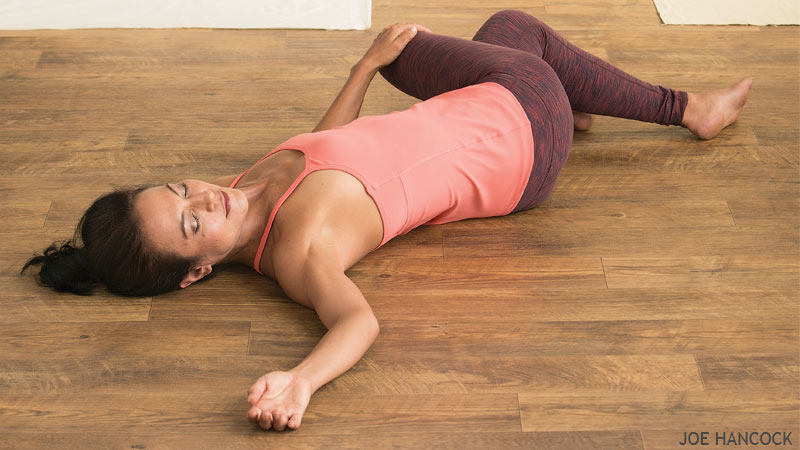
The Supine Twist
The supine twist mobilizes those little facet joints that are the focus of binding pain.
Start with 20 on one side, then 20 on the other side. Bring the feet closer to your hips to target higher in the low back. Move your feet away from your low back to target muscles in the hip.
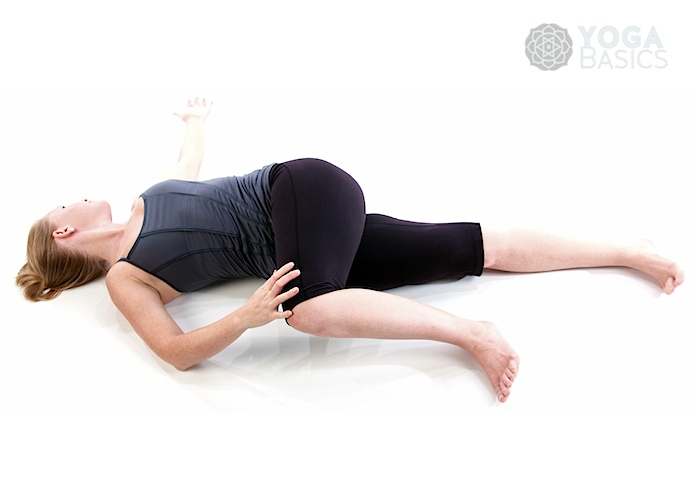
Many people prefer this variation on the supine twist.
It often produces little clicks of mobilizing vertebrae that release the trigger points, creating immediate relief.
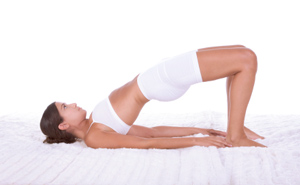
Bridging
Bridges are good at stabilizing the low back, lengthening the core, and strengthening your hamstrings.
20 reps. Start slow and easy. Lift a little higher each time. Follow the AIS Guidelines.
Ice your back afterward to stabilize the joints and reduce inflammation.
If you have this sharp pain in your low back when coughing, see your bodyworker for longer-lasting relief.
Support Integrative Works to
stay independent
and produce great content.
You can subscribe to our community on Patreon. You will get links to free content and access to exclusive content not seen on this site. In addition, we will be posting anatomy illustrations, treatment notes, and sections from our manuals not found on this site. Thank you so much for being so supportive.
Cranio Cradle Cup
This mug has classic, colorful illustrations of the craniosacral system and vault hold #3. It makes a great gift and conversation piece.
Tony Preston has a practice in Atlanta, Georgia, where he sees clients. He has written materials and instructed classes since the mid-90s. This includes anatomy, trigger points, cranial, and neuromuscular.
Question? Comment? Typo?
integrativeworks@gmail.com
Follow us on Instagram

*This site is undergoing significant changes. We are reformatting and expanding the posts to make them easier to read. The result will also be more accessible and include more patterns with better self-care. Meanwhile, there may be formatting, content presentation, and readability inconsistencies. Until we get older posts updated, please excuse our mess.



